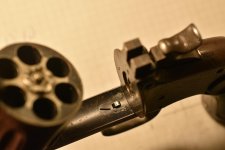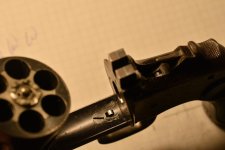I was looking at one of these and had a question.
Is it normal for the cylinder to "freewheel" with the hammer down - or should the cylinder stop engage the cylinder notches when the hammer is down?
I expected the cylinder to lock up even with the hammer down, but the seller said that it is normal for the cylinder to spin freely until the hammer is cocked, and that is the only time that the cylinder locks up.
Is he right?
Is it normal for the cylinder to "freewheel" with the hammer down - or should the cylinder stop engage the cylinder notches when the hammer is down?
I expected the cylinder to lock up even with the hammer down, but the seller said that it is normal for the cylinder to spin freely until the hammer is cocked, and that is the only time that the cylinder locks up.
Is he right?
Last edited:



